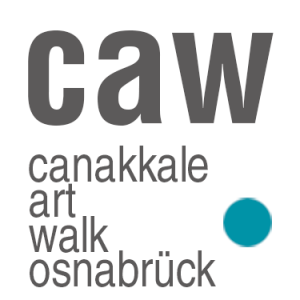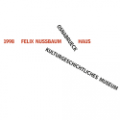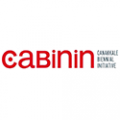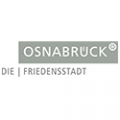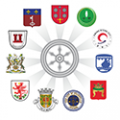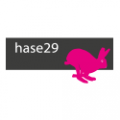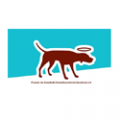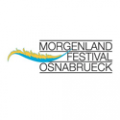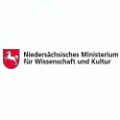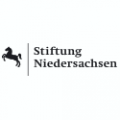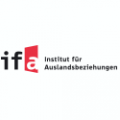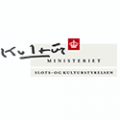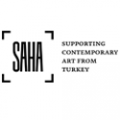Roberto Voorbij
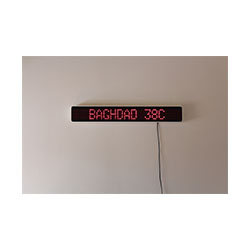
The Weather this week
in der Kunsthalle
Roberto Voorbij (1974) lives and works in Amsterdam, holds a bachelor degree in Visual arts and Art History from the Utrecht School of Arts and has attended a.o. Advanced Sculpture from the School of the Art Institute of Chicago where he took classes from Iñigo Manglano-Ovalle during the late 1990s. Nominated for the ‘Prince Bernhard Fund’ and ‘Piet Bakker Prize’ for his bachelor thesis and more recently for the ‘Artist in Action Prize’. Voorbij is a multi-disciplinary artist working with a.o. 3D software, assemblage, (digital) collage, silkscreen and video.
Besides (national) identity are commerciality and public space recurring themes in Voorbij’s work. What highly fascinates him about this is the underlying history, politics and marketing strategy of our seemingly neutral environment. His works are often socially critical.
This year his short ‘One minute silence’ screened at the 300. Stuttgarter Filmwinter, he took part in the ‘Dump Trump’ group exhibition at WG Kunst in Amsterdam. ‘Without clear purpose’ had its Dutch premiere at the Holland Animation Film Festival, his music video ‘Doppler’ will screen at Fest Anča, Slovakia later this year.
Roberto Voorbij (1974) lives and works in Amsterdam, holds a bachelor degree in Visual arts and Art History from the Utrecht School of Arts and has attended a.o. Advanced Sculpture from the School of the Art Institute of Chicago where he took classes from Iñigo Manglano-Ovalle during the late 1990s. Nominated for the ‘Prince Bernhard Fund’ and ‘Piet Bakker Prize’ for his bachelor thesis and more recently for the ‘Artist in Action Prize’. Voorbij is a multi-disciplinary artist working with a.o. 3D software, assemblage, (digital) collage, silkscreen and video.
Besides (national) identity are commerciality and public space recurring themes in Voorbij’s work. What highly fascinates him about this is the underlying history, politics and marketing strategy of our seemingly neutral environment. His works are often socially critical.
This year his short ‘One minute silence’ screened at the 300. Stuttgarter Filmwinter, he took part in the ‘Dump Trump’ group exhibition at WG Kunst in Amsterdam. ‘Without clear purpose’ had its Dutch premiere at the Holland Animation Film Festival, his music video ‘Doppler’ will screen at Fest Anča, Slovakia later this year.
The work ‘The weather this week’ comprises of a news ticker showing the weather forecast for this week for Baghdad, Damascus, Khartoum, Nairobi and Abuja (measurement date April 13, 2017). These rather common announcements contrast with the news images of the conflict areas. Instead of focussing on uprisings and war, ‘the news’ is being ignored. ‘The weather this week’ as a warning for the next forgotten war? Perhaps… Looking closer at the recent history of among others Syria and Iraq you will indeed find a correlation between climate and revolution. Climate change as a determining factor for the emergence of various conflicts. In the case of Syria it’s the combination with years of mismanagement by the Assad regime which provided the basis for destabilisation of the complete region. The record droughts contributed to the huge migratory flows to the cities, on top of the already present Iraqi refugees, where the spark eventually arose for the revolution… Scientists all agree that in the future, the risk of tensions in conflict areas will only increase due to climate change. The Pentagon is less reluctant in its views and already includes the increased threat in its risk analysis. By placing the LED artwork right here in Western Europe a link is being made, a link between here and there. A connection between our lifestyles, our daily choices, our actions and seemingly remote places.
In relation to the theme of ‚homeland’ the boundary of our nation is being questioned. The ‘strangers’ coming here may have more with us in common than some of us like to admit. Our actions here influence (since many centuries) the daily lives of the ones living over there. Homeland as a delimitation which only few can acces is questioned. The border of the homeland is dynamic and porous. The geological border isn’t the border of our influence.
The work ‘The weather this week’ comprises of a news ticker showing the weather forecast for this week for Baghdad, Damascus, Khartoum, Nairobi and Abuja (measurement date April 13, 2017). These rather common announcements contrast with the news images of the conflict areas. Instead of focussing on uprisings and war, ‘the news’ is being ignored. ‘The weather this week’ as a warning for the next forgotten war? Perhaps… Looking closer at the recent history of among others Syria and Iraq you will indeed find a correlation between climate and revolution. Climate change as a determining factor for the emergence of various conflicts. In the case of Syria it’s the combination with years of mismanagement by the Assad regime which provided the basis for destabilisation of the complete region. The record droughts contributed to the huge migratory flows to the cities, on top of the already present Iraqi refugees, where the spark eventually arose for the revolution… Scientists all agree that in the future, the risk of tensions in conflict areas will only increase due to climate change. The Pentagon is less reluctant in its views and already includes the increased threat in its risk analysis. By placing the LED artwork right here in Western Europe a link is being made, a link between here and there. A connection between our lifestyles, our daily choices, our actions and seemingly remote places.
In relation to the theme of ‚homeland’ the boundary of our nation is being questioned. The ‘strangers’ coming here may have more with us in common than some of us like to admit. Our actions here influence (since many centuries) the daily lives of the ones living over there. Homeland as a delimitation which only few can acces is questioned. The border of the homeland is dynamic and porous. The geological border isn’t the border of our influence.
